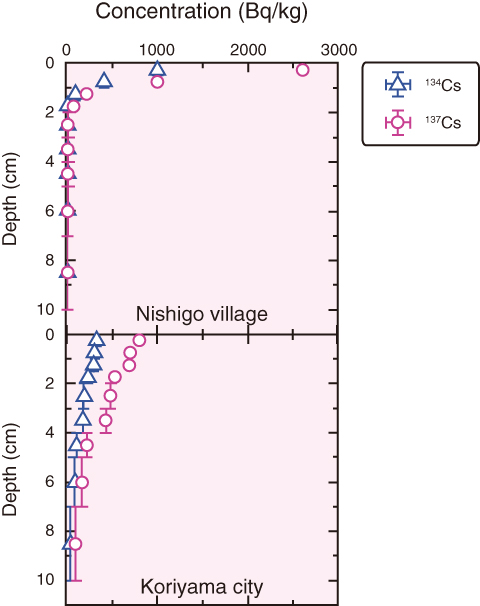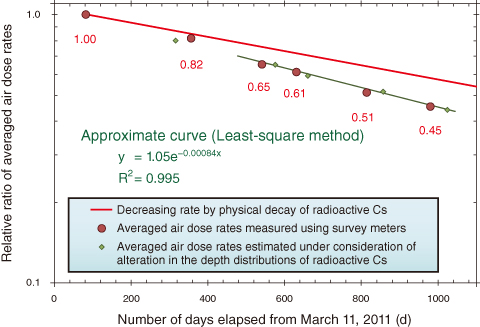
Fig.1-9 Depth distributions of radioactive Cs in the soils

Fig.1-10 Temporal changes in averaged air dose rates above the ground measured using survey meters
With funding from the Ministry of Education, Culture, Sports, Science and Technology of Japan (MEXT) and the Nuclear Regulation Authority (NRA), we have conducted comprehensive large-scale environmental monitoring as a national project since June, 2011, and provided reliable information on the distributions of the air dose rate and the radioactive nuclides deposited in soil on the ground. This has been done to assess the consequences of the accident at the TEPCO’s Fukushima Daiichi NPS (1F), and to give basic information for judgment on substantial measures such as decontamination, rearrangement of evacuation zones and so on. As a part of environmental monitoring, depth distributions of radioactive cesium (Cs) in soils have been obtained using a scraper plate method, which can collect soil samples of different depths with minimal cross-contamination.
During the environmental monitoring performed in November, 2013, radioactive Cs deposited in the soils remained within 5 cm of the surface on the whole. Exponential decreases of the concentrations of radioactive Cs with depth (Fig.1-9) were observed in many situations. The depth distribution was found with repeated environmental monitoring to gradually progress deeper into the soil.
The temporal change of the averaged air dose rates was also measured above the ground at various locations around the 1F using survey meters, and the results relative to a first result are shown in Fig.1-10. The reduction rate of the averaged air dose rates was steeper than that caused by the physical decay of radioactive Cs alone. In addition, the results obtained in a migration study performed as a part of the project showed that the horizontal advection of radioactive Cs was negligibly small.
To find the reason for this difference, simulations of the air dose rate as a function of the depth distribution of cesium-137 (137Cs) were conducted with the Particle and Heavy Ion Transport code System (PHITS). The calculation results in the approximated curve (Fig.1-10) were in good agreement with the plots of the averaged air dose rates. The results indicate that the averaged air dose rates have decreased because slight changes in the depth distribution of 137Cs with time have increased the shielding effect of the soil against γ-rays.
The present study was sponsored by the Secretariat of the Nuclear Regulation Authority (NRA).